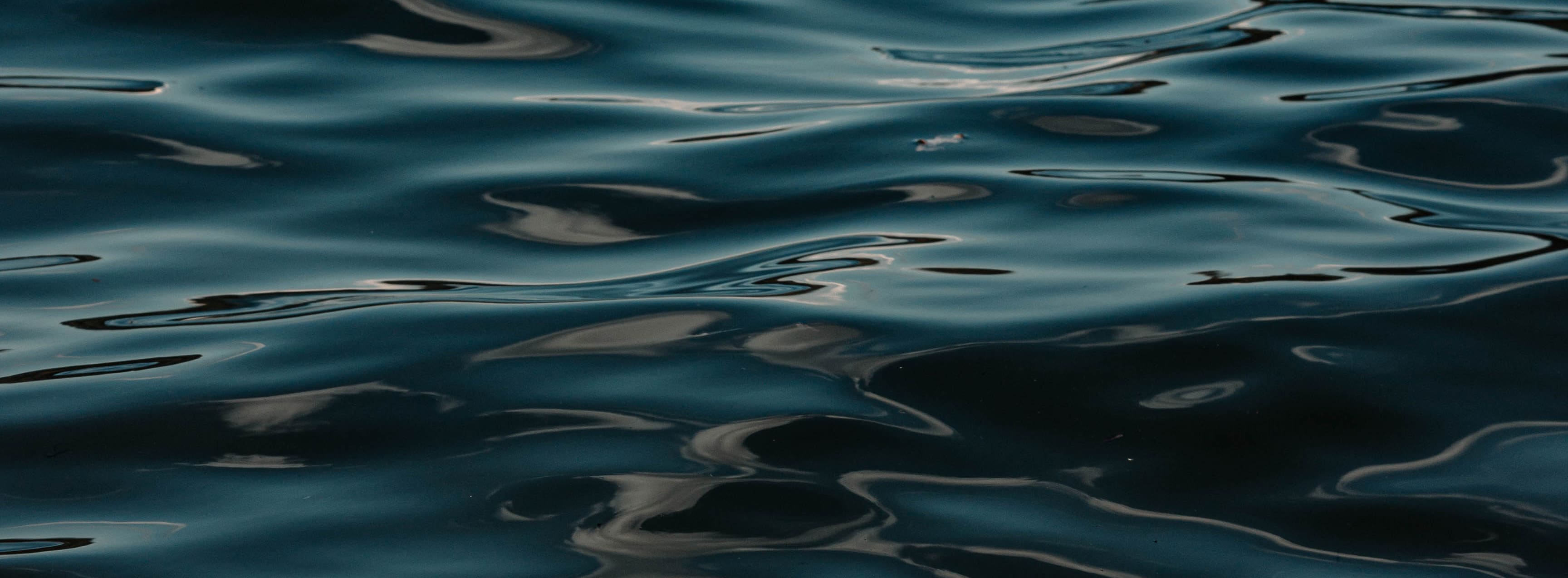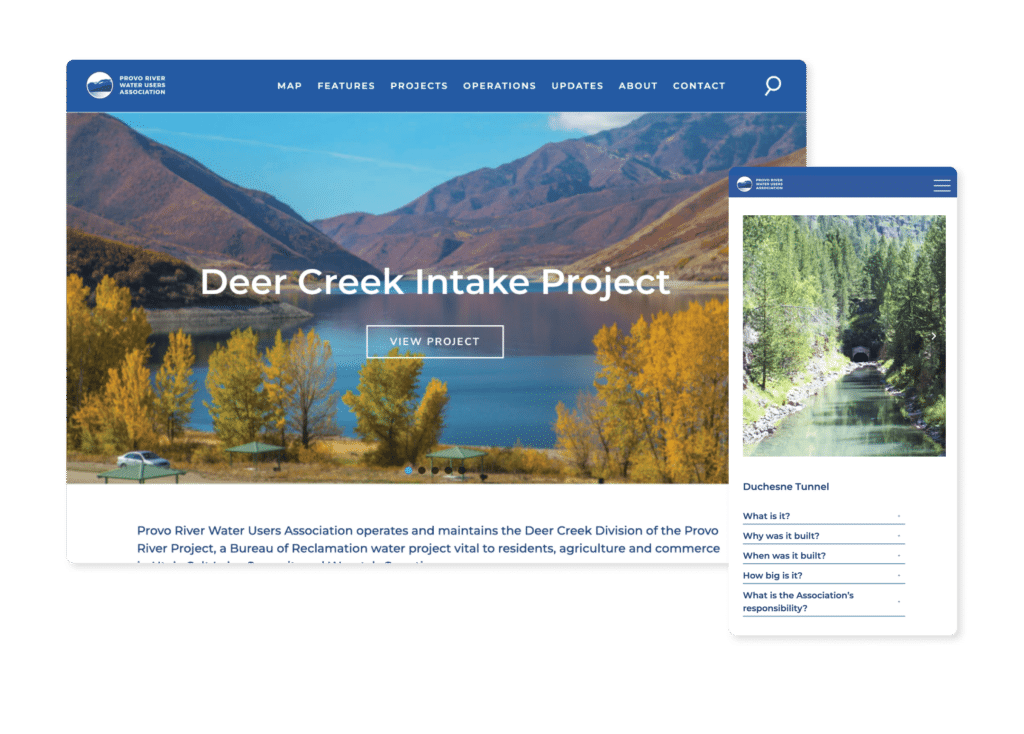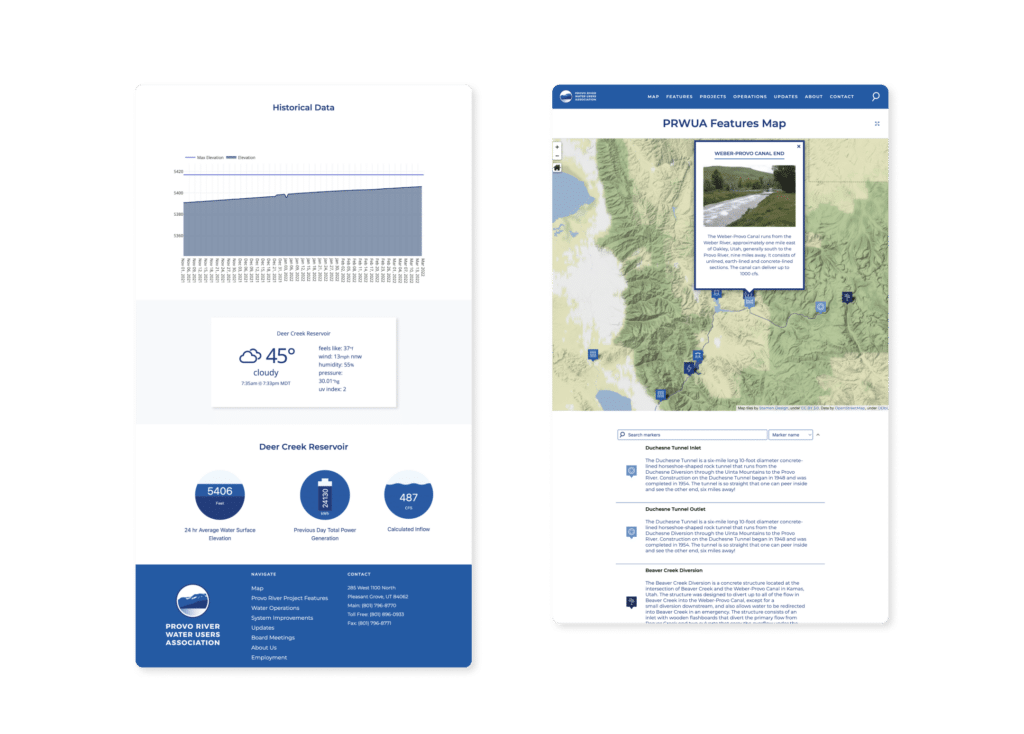With three websites with a 10-year shelf life, another celebrating its quinceañera, and more than 100 websites built and launched, Anchor & Alpine knows what it takes to build websites for the long haul.
Somewhere on the Internet, there is a website, built using tables in 2006, that is still humming along and delivering candidates and placement opportunities to one of our very first clients. The site has been in continuous operation for more than 15 years now. We made a slight update to it about a month ago, but other than that, it’s just done its job longer than most companies have been in business.
Just last month we re-launched a website that we originally designed and built in 2010. The original site lasted 12 years and we’re hoping for a similar run with their new site, Tuscarts.org.
That launch of TuscArts’s new website finished off a trifecta1 of websites that we built more than ten years ago and were able to revamp recently as our rebranded company, Anchor & Alpine. Each had its own quirks and required its own pragmatic approach.
We recently read the book, Crossing the Chasm2 , while helping one of our customers strategize their website for growth. The book is an excellent look into high-tech marketing and is recommended for everyone from engineers to designers to read. In the book, the author talks about the types of customers that a product can have. The Innovator/Early adopter relies on intuition and gets excited and exuberant and then off to the next thing. The early majority is driven by practicality, they stick around companies for a long time and the solution they implement will be their long-term project (or problem).
This kicked off a discussion about how we build websites—because while we may be innovators and early adopters at heart—we’re pragmatists when it comes to building websites that can be maintained and run successfully for years to come.

©Bowen Collins & Associates, Inc.
More People, More Projects, Bowen Collins Continues to Make an Impact
Bowen Collins was the first of our decade-to-refresh trifecta. They were also one of our first clients as our rebooted agency, Anchor & Alpine. Their site was ready for a CMS upgrade to WordPress with better editing in the hands of their staff. We also helped them add new locations, new staff, and many new projects.
See Bowen Collins Portfolio Project ›

© Provo Water Users Association.
Call the Dam Manager, PRWUA Gets an Update
Provo River Water Users Association, PRWUA, was ready for a new site in 2021. We upgraded their Features Map with some updated icons and information about each project. We also moved them to WordPress so they would be able to easily keep their site updated and post their annual reports.
This website remains one of the more interesting innovations we’ve built with a client—this website reports live data from a reservoir in the high mountains of Utah.

©The Arts and Humanities Council of Tuscaloosa County, Inc.
A New Home for The Arts Council, Bama Theater, and the Cultural Arts Center
We met The Arts and Humanities Council of Tuscaloosa Alabama, with a thankfully shortened moniker of TuscArts in 2010 through a past coworker. We’ve done small updates here and there over the years, but in 2021 they decided it was time for a new site.
Like the other sites that we relaunched this year, TuscArts was looking for a more modern editing experience and a better, more responsive, viewing experience for their audience.
We jumped into the project and completely blew it. We had assumed too much about their growth in the past 10+ years. We were sure they wanted to keep their three websites—Arts Council, Bama Theater, and Cultural Arts Center—separate as they always had. It was a bit of a disaster for a design meeting. Ooof. That happens, and as one client said—it’s not that there won’t be problems at some point, it’s how your team handles those problems that keep us working with you. We regrouped with the client, pitched everything we knew out the door, and found some new insight into their logo and brand that we could carry into a new website.
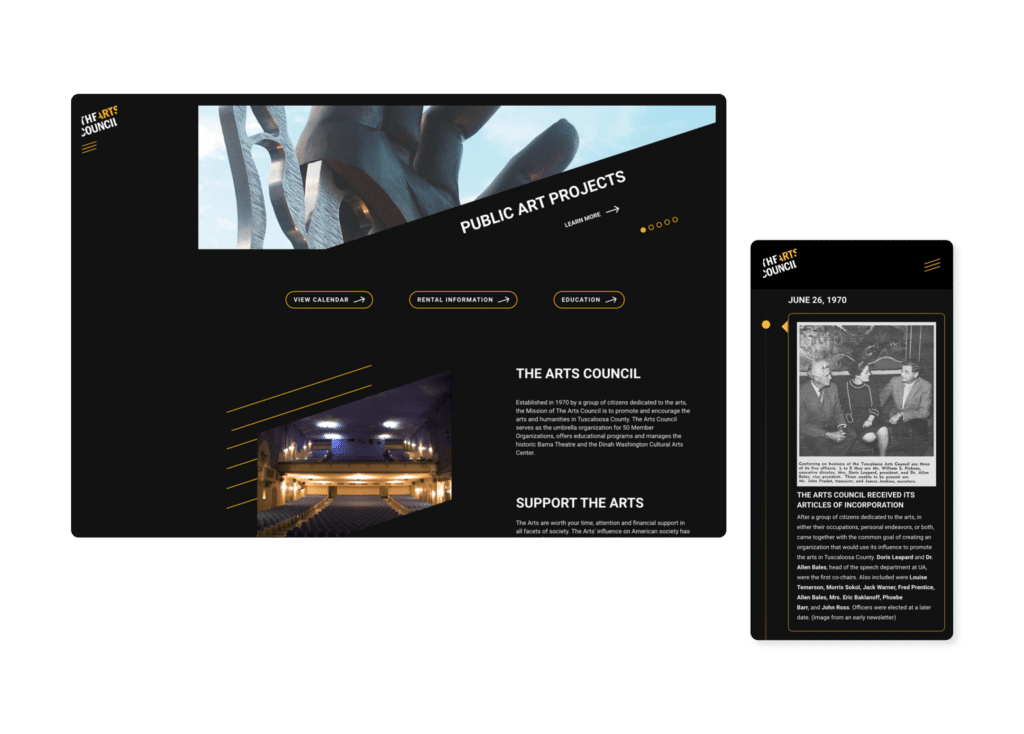
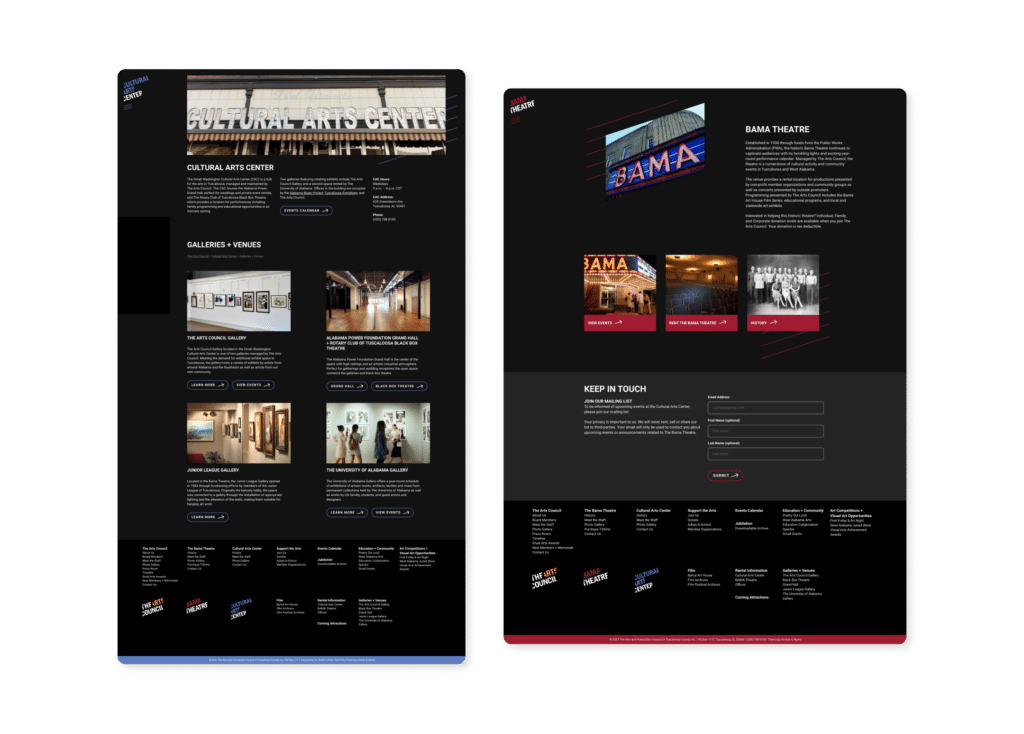
It’s worth mentioning that these organizations have been in business for a long time. Bowen Collins has been around since 1997, The Arts Council since 1970, PRWUA started their first project as part of the National Recovery Act of 1933 and approved by the President in 1935. These aren’t even our oldest clients at Anchor & Alpine, and we’ve been around since 2006. Those honors go to Warner Bros., started in 1923 and Boart Longyear, currently 132 years old, started in 1890. We launched a storytelling website for their 125th anniversary, seven years ago.
How Long Should a Website Last?
We generally tell people that websites will last for 3-5 years. Around that time you’ll want to do a fairly major overhaul—add new sections to engage your users, refresh the design, update your message for who you are now.
Let’s not ignore that websites are expensive. Our minimum billing is $15,000 and most websites we work on are in the $40-120k range. Our biggest site was $250,000. Websites, like cars, need some maintenance, a little extra attention once in a while, and they should last for years to recoup the investment with a significant impact on the business and ROI in general.
How Do You Build A Long-Lasting Website?
Like anything else—well-made clothing, good furniture, or high-end cars—things that are made right, last longer. The same is true of websites.
Build it Right the First Time
There is always a shortcut or a kludgy hack you can take on a website. And, let’s not lie, sometimes duct tape and bubble gum is the best you have. If we take a little more care though and we build right the first time, considering the design and development, the editors that will use the site day in and day out, and also security and accessibility, you have a tight ship when you first leave the harbor. We continually challenge and push each other to find a more elegant solution, a more efficient path, a more fun way for people to work with websites.
Security from Day One
Security on the Internet cannot be an afterthought. Security is baked into everything we do here, led by a partner who worked on insider threat management with the three-letter agencies in Washington, D.C.. Security starts on day one with our crew, from encrypted hard drives, usage of 1Password, 2FA, to lessons about never sharing passwords and how quickly a weak password can be hacked.
WordPress security includes password education and polite enforcement, such as; you won’t be allowed to have ‘admin’ as a username and we’ll be auditing your users once a quarter. We have some best-in-class security plugins we use and we actively monitor and defend against cyber attacks.
Accessibility is Good SEO
Accessibility should start at the brand level with your color choices. When you build a website that has accessible color contrast (4.5 to 1), text sizes (16px), alt tags (image descriptions) you are already ahead of the SEO game. Google now considers accessibility in the algorithm and we’re seeing many sites being penalized. Many of the tasks we take on for accessibility directly impact SEO, plus they make your site that much more friendly and future-proof.
Good Strategy & Good Design
We start all projects with a strategy and discovery phase. When you start well and plan for the near and middle-distance future your sites end up lasting longer and meeting the needs of the business better.
Knowing how far design trends are going, and where you are in the overall trend arc, helps us design long-lasting sites. Our design work is thoughtful and well researched and our designers work closely with developers to spot and solve issues before they are problems down the line.
Watch for Fads and Plan for Them
Part of doing good design for clients is knowing when a fad can be used for high impact and having a plan to capture that impact without dragging a fad around like leggings in flood pants season.
When the world shut down in March of 2020 our former client, Procare, had just launched a new website. No one could ignore COVID and masks or risk being so tone deaf as to be offensive. We worked with the client to update their illustration system to have mask overlays and then registered the pages of the site where masks appeared so we could—as we thought at that time—swiftly remove all of the masks in stock photos and illustrations once the threat had passed. Two months at most. Two years later the masks are just barely starting to come down, but the point is the same—know when something is a fad and have a plan to handle the replacement.
Dichotomy of Maintenance
When we engage in a relationship with a client and launch a website we always plan for two things:
- To manage, take ownership, and be personally invested in a client’s website for the next decade.
- To immediately turn the website over to the client or another web firm to manage.
We are here to do the right thing by our clients, that means not sneaking in ways to tie them to us. Sure, we’ll host your website for you if you want us to. Yeah, you can totally hire us to stay on after launch to build out and maintain the site—and we’d love it if you would. You can also take it all in house or work with a different agency. We make sure that you always own your site.
The two biggest ways we can maintain this dichotomy? Good documentation and a focus on editors.
Good Documentation
Every website we build has a documentation component. We start with the beginner stuff, like WordPress tutorials, then get into custom CSS, and capture any interesting things your site does. Writing and keeping documentation up to date ensures everyone on the project knows how the site works.
Documentation isn’t just for clients or other agencies, we often find ourselves digging up documentation on a project to remind ourselves how to do something specific.
View our WordPress Tutorials ›
Focus on the Editors
Our focus is often on WordPress editors. Those members of your staff that will be working with WordPress day in and day out. We find interesting ways to build efficiencies for editors—like webinar pages that automatically update to have a registration form before an event and a video in place of the form after an event. We often add more functionality to the editing screen—like reminding editors to add a CTA with a nice drop down to select which one they want to use with the latest ones always updated in the drop down.
The more we empower the client team to keep their website running the better off everyone is. You don’t want to pay us to make a text edit, and, while we’re happy to make that edit, we don’t think it’s worth $50 for the effort either.
How Long Will Your Next Site Last?
Whether you are looking for a web agency for a long time or just a good time we may be the crew for you.
- And yes, we mean trifecta in the correct usage of the word, three projects finished in the correct order. [↩]
- Moore, Geoffrey A. Crossing the Chasm: Marketing and Selling Disruptive Products to Mainstream Customers, 3rd ed. HarperBusiness, 2014. [↩]
- Featured image by Nick Karvounis on Unsplash [↩]
- Screenshots and work representations may be edited from their live versions. These are edited to highlight different features in small spaces and to protect and redact trade secrets and personally identifiable information (PII). [↩]
